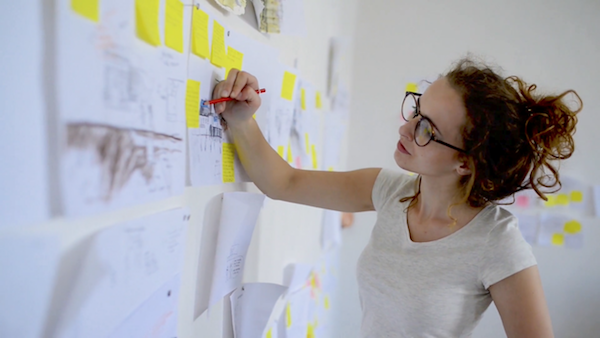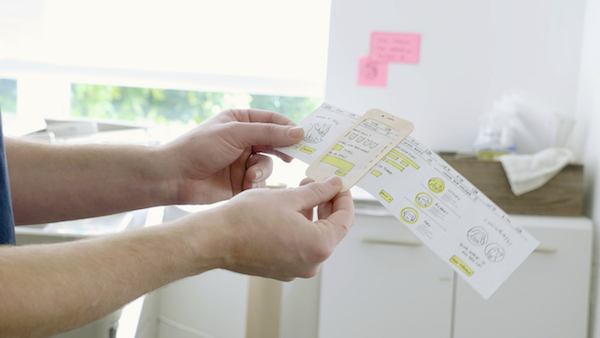6 Tips for Prototyping Service Design Experiences
“Prototyping is so powerful because you're aligning the needs of the end consumer with the capabilities of the organization.”
–Ilya Prokopoff, Partner and Managing Director IDEO SF
(View the full transcription here.)
In our most recent Creative Confidence Series chat, Suz and Ilya share examples of service design prototypes they’ve worked on including Kaiser Permanente and the postpartum experience for new mom’s, reinventing the Walgreen’s pharmacy experience, and a new retail service design and innovation capability for Interbank Explora.
Service design includes all the intangible aspects of how an organization seeks to build a relationship over time with its customers. And one goal of prototyping these service design experiences is to bring tangibility to these intangible experiences. Prototyping is such a powerful tool because you're organizing your service around the needs of the end consumer. Prototyping is important for determining what lands correctly and what’s missing. It’s a way to depict how the experience might play out over time and to gather feedback around that.
One of our favorite examples of prototyping a new service was with Kaiser Permanente.
Kaiser Permanente Journey Home Board Prototype
With Kaiser, we looked at the pre and postnatal experience, the entire journey from finding out that you’re pregnant to leaving the hospital with your newborn. And we found a big area of opportunity was during the time after delivery and before mother and baby go home. There’s so much that needs to get done in that 24-48 hour period after delivery. We ended up creating what we call the journey home board, essentially a menu where nurses flip over cards for the steps that need to happen before moms and newborns can go home. It opened up communication for moms to know what still needed to be done and to ask questions about what it all meant.
When we initially prototyped the board there was concern that it would cause confusion for moms and result in more calls and questions to the nurses. So, we hung paper versions of journey home board in three patient rooms and asked a nurse on duty to mark the number of phone calls they received from those rooms versus the rooms without the paper prototype. And we discovered that moms in the rooms with the paper prototypes had 60% fewer questions. That was a pretty good indication that this service offer was going to make a lot of sense for Kaiser.

Ready to make your own service prototypes? Here are Suz and Ilya’s tips and tricks.
6 Tips for Prototyping a Service
1. Determine the moments that matter
What are the most important inflection points in the journey? It’s impossible to be awesome at everything all the time, so it’s critical to identify the points in the experience where the brand really needs to nail it. This a great way to prioritize the places to devote your energy.
How to identify the moments that matter:
- Spend a lot of time investing in understanding what’s important to the people that are going to be consuming that service or participating in that service.
- Spend time in people’s lives, understanding what excites them and what irritates them. Take cues from the ways people are consuming your service offer or similar service offers out there.
- What personas or segments are you prioritizing as an organization? What’s possible with your capabilities?
- Create a dialogue between what feels right and aspirational and what feels possible. This doesn’t mean the aspirational-but-not-possible options have to be taken off the table, they may just need to be developed over time.

2. Be on the lookout for early indicators
It’s easy with early prototypes to race toward metrics and evidence. But early indicators that something is going to be better are critical with these rough prototypes. How do you get anecdotes or peek at evidence that you might be able to scale this? The simple paper prototype of the Kaiser Journey Home Board triggered a sense of confidence that this was the right solution for Kaiser.
3. Tap the creative potential of those who are delivering the service.
Rely on the instincts and insights of the people living in these moments every day. Engage the ultimate stakeholders as designers. And ask good questions about how things will play out.
4. Use time-based moments.
Think about the arc of the experience over time. In these interstitial moments that matter mentioned above, how do you help people remember you? How do you help people anticipate the next engagement moment?
5. Ask people to imagine a more idealized version
What’s the idealized experience that addresses some of the known challenges? Low fidelity prototypes can be extremely helpful because often the users want to give you feedback to help design something that meets their needs.

6. Use constraints to force yourself to stretch
Push beyond the normal mediums you use. For example, what if you could only design through space, people, signs, etc…Organizations and industries tend to have a bias toward certain channels. Healthcare has a bias toward using people to deliver a service, which is one reason we created the journey home board purely through signage.
Ask people to think about all the kinds of interactions they can play with. Then develop design solutions for just one. What if you could only deliver the experience through people? What if you could only deliver with signage and communications or only through the cues the space gives about how you move through an experience?
Download a PDF with images of IDEO service design prototypes from Kaiser Permanente, Walgreens, and Interbank Explora.
To go deeper and learn IDEO methods for prototyping services, check out our course on human-centered service design .
For More on Prototyping:
How to Prototype a New Business
Turning Creative Ideas into Viable Companies
How to Move from an Idea to a Prototype
Interested in more design thinking exercises? Check out our Design Thinking Overview page and Design Thinking Resources page.
- choosing a selection results in a full page refresh
- press the space key then arrow keys to make a selection



